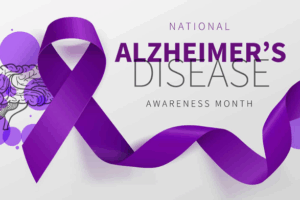Correctly Diagnosising Dementia Symptoms Can Save a Life

When an older person begins exhibiting symptoms of memory loss loved ones may at first believe it is just a normal part of the aging process and ignore the symptoms. If the memory loss worsens and other symptoms appear such as confusion, difficulty with complex tasks and orientation, difficulty finding words and confusion about previously familiar people and faces the first step is often a visit to the primary care doctor to request a cognitive evaluation. In some cases, the busy primary care physician simply enters a diagnosis of dementia and prescribes a type of drug that is used for the symptoms of Alzheimer’s such as Aricept or Exelon. The family takes their loved one home believing there is nothing else that can be done.
While Alzheimer’s is the most prevalent type of Dementia there are over 200 other types of disorders that produce dementia symptoms. Each type of disorder carries a different prognosis which is important to understand in terms of expectation for lifespan and rate of decline so the family and patient can plan for future financial and caregiving needs, treatments and drug interactions. In a small percentage of cases the causes of dementia may actually be reversible with proper treatment. For these reasons it is critical that a senior beginning to exhibit signs of dementia be thoroughly evaluated by specialists such as a neurologist, geriatric psychiatrist or specialized clinic associated with a health system or university. In some cases it could be a matter of life and death. There are five major types that account for the vast majority of diagnoses.
1. Alzheimer’s Disease (AD)
Alzheimer’s Disease (AD) is the most common form of dementia, accounting for a range of 60-80 percent of dementias. AD is the sixth leading cause of death in the United States and presents a looming public health crisis with the aging of the Baby boomer generation. AD is a slow progressing illness, and symptoms include memory loss, progressing to further impairment in many cognitive areas. Alzheimer’s dementia is one of the few dementias for which acetylcholinesterase inhibitors (e.g. Aricept, Exelon and Namenda) may actually slow symptoms.
This is important to note: These drugs are often prescribed for all people who are diagnosed with dementia. However, they are only FDA approved to treat Alzheimer’s dementia. Some evidence suggests that they may be helpful in the treatment of other dementias, but these are not confirmed. These medications can be costly and have some significant side effects – important considerations when assessing the benefits and costs of taking a medication that may not be approved to treat the dementia someone has.
2. Vascular Dementia (VD)
Vascular Dementia sometimes referred to as post stroke or multi-infarct dementia, is a form of dementia resulting from complications related to the vascular system (blood vessels). It can often be the result of a series of strokes but a person does not have to have a stroke to have Vascular Dementia. It accounts for about 10 percent of dementias and is one of the few dementias that have the potential for prevention. Vascular Dementia results from blockages in blood vessels caused by lifestyle choices (diet, exercise, smoking), some chronic conditions, and microscopic bleeding. Symptoms of Vascular Dementia are often different than those of AD. Symptoms include impairments in judgment, reasoning and making poor decisions rather than memory loss, although memory loss can be present also. Making healthier lifestyle choices (reducing the risk factors associated with stroke and heart diseases (i.e. quitting smoking, regular exercise and heart healthy food choices) can also reduce the risk for Vascular Dementia. Once Vascular Dementia is diagnosed treatment of the underlying vascular disease can slow the decline of the dementia. People can also have a combination of Alzheimer’s Disease and Vascular Dementia called “mixed dementia.
3. Lewy Body Dementia (LBD)
Lewy Body Dementia (LBD) is not well known but may be the second most common form of dementia in the US. Actor Robin Williams was diagnosed with this form of dementia prior to his death from suicide which is raising public awareness of the disease. Symptoms include cognitive changes in combination with problems with movement (issues with walking, balance, tremors) and visual hallucinations. People with LBD may also have more dramatic changes in alertness and memory. The diagnosis of LBD is especially important when it comes to medications because up to half of patients with LBD will exhibit severe sensitivity to neuroleptic medications (used to treat symptoms of psychosis). These drugs are often used to treat behavioral symptoms and sleep problems in patients with AD and are used extensively in many nursing homes. Patients with LBD who are treated with anti-psychotic drugs can have worsening cognition, heavy sedation, increased or possibly irreversible parkinsonism, or symptoms resembling neuroleptic malignant syndrome (NMS), which can be fatal. LBD may also be one of the fastest progressing dementias, with an average life expectancy following diagnosis of about five years.
4. Parkinson’s Disease (PD)
Parkinson’s Disease is thought to be related to Lewy Body Dementia due to their common foundations—protein deposits (named after the researcher “Lewy” who discovered them) in the brain. The difference between PD and LBD is mostly in the order of presentation of symptoms. PD presents first as a movement disorder, due to damage by the disease to the part of the brain that manages movement Parkinson’s disease is more common than previously thought. An estimated 2 percent of adults aged sixty-five and older have this neurological disorder. One of the principal treatments of PD is L-dopa, which is a synthetic drug designed to increase the amount of dopamine in the brain, which results in better movement. Sadly, a common side effect of increasing dopamine is hallucinations, for which doctors often prescribe the neuroleptics that are very dangerous to LBD and PD patients. Knowing the diagnosis of PD or LBD can help families work with their physicians and care facilities to prevent possible dangerous side effects.
5. Fronto-Temporal Dementia (FTD)
FTD results from degeneration of the frontal lobes (responsible for reasoning, decision making, impulse control, and some emotion regulation), and the temporal lobes (responsible for language and some aspects of memory). FTD comes in three forms:
• Behavioral – with symptoms of personality changes and impulse control and sometimes violent outbursts.
• Semantic – symptoms include loss of verbal memory and understanding.
• Progressive non-fluent aphasia – changes in the ability to speak, read, write and understand what others are saying.
All dementias are heartbreaking and difficult for patients and families to go through, but FTD is particularly difficult to deal with because of some of the symptoms. It is very important to know this diagnosis so family members can prepare for caregiving needs and educate themselves on what to expect and ways to cope.
Family members need to become strong advocates for their loved one with dementia. Insisting on a thorough evaluation by qualified professionals is the first step in their long journey. Once a probable diagnosis is made, medical professionals can provide families with education on the type of dementia, common symptoms, methods of coping with changes, and long-term planning. Even something as simple as explaining to a family member that hallucinations are common with LBD patients can serve to dramatically reduce anxiety and give caregivers peace of mind. Each form of dementia has local advocacy groups that can provide support, education and referral to professionals with experience in treating their specific form of dementia.






